Butterflies and Moths
Media

Species Types
Scientific Name
About 75 species in North America north of Mexico
Description
Missouri has 16 species of saturniid, or giant silkworm moths. Many of them are spectacular, including the cecropia, luna, buck, io, imperial, polyphemus, rosy maple, spiny oakworm, and royal moths.
Media
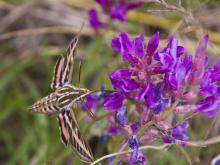
Species Types
Scientific Name
More than 50 species in Missouri
Description
Sphinx moths are usually large and heavy bodied, with a long, pointed abdomen. Members of this family often hover near flowers, feeding on nectar and looking like hummingbirds or bumblebees.
Media

Species Types
Scientific Name
More than 12,000 species in North America north of Mexico
Description
Learn about moths as a group. What makes a moth a moth? How are moths different from butterflies? What are the major groups of moths?
Media
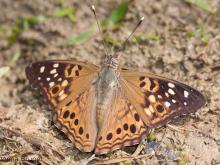
Species Types
Scientific Name
Asterocampa celtis
Description
The hackberry emperor eats hackberry leaves as a caterpillar. The adults fly erratically. They often alight on people to absorb sodium from sweat.
Media
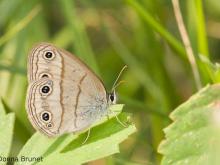
Species Types
Scientific Name
Megisto cymela
Description
The little wood satyr is an abundant butterfly found in Missouri’s open woodlands and brushy fields. Its bouncing flight has been called “skipping.”
Media
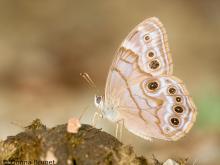
Species Types
Scientific Name
Enodia anthedon (syn. Lethe anthedon)
Description
The northern pearly-eye is grayish brown with dark eyespots. Of three pearly-eye species in Missouri, it is the most widespread.
Media
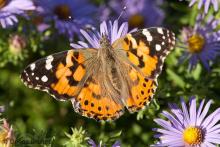
Species Types
Scientific Name
Vanessa cardui
Description
The painted lady is a delicately patterned butterfly found nearly worldwide. It migrates to Missouri in spring. There are several broods.
Media
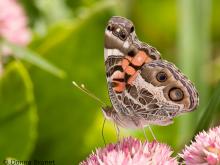
Species Types
Scientific Name
Vanessa virginiensis
Description
The American lady resembles the closely related painted lady butterfly. It has two large spots on the hindwing underside, however.
Media

Species Types
Scientific Name
Junonia coenia
Description
The common buckeye is one of Missouri’s prettiest butterflies, but it doesn’t overwinter here. Instead, migrants arrive in late spring and early summer.
Media
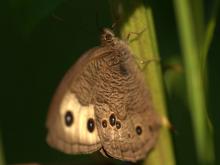
Species Types
Scientific Name
Cercyonis pegala
Description
Common wood nymphs vary by region. Some have a yellow area on the forewing containing two eyespots. Others may have the yellow area reduced to a yellow circle around each eyespot.
See Also


Media

Species Types
Scientific Name
About 1,500 species in North America north of Mexico
Description
Adult caddisflies are mothlike. Their larvae are aquatic and build portable, protective cases out of local materials, including grains of sand, bits of leaves and twigs, and other debris.
Media

Species Types
Scientific Name
Corydalus cornutus
Description
Adult eastern dobsonflies are huge and mothlike, with large wings and a weak, fluttery flight. The fiercely predaceous aquatic larvae, called hellgrammites, are well-known to anglers, who often use them as bait.
About Butterflies and Moths in Missouri
Butterflies, skippers, and moths belong to an insect order called the Lepidoptera — the "scale-winged" insects. These living jewels have tiny, overlapping scales that cover their wings like shingles. The scales, whether muted or colorful, seem dusty if they rub off on your fingers. Many butterflies and moths are associated with particular types of food plants, which their caterpillars must eat in order to survive.





















